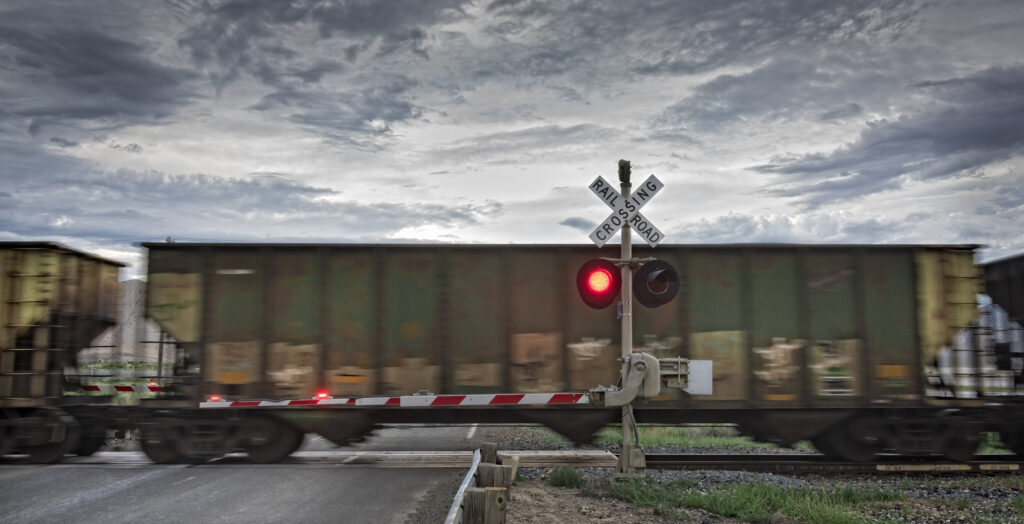A freight train passes at a railroad crossing. (Thomas Winz | Getty Images)
Freight trains have grown longer over the past two decades, blocking highways, delaying passenger trains and increasing the potential for derailments as regulatory safeguards have lagged, a new federally commissioned study has found.
In a report released Tuesday, researchers with the National Academies of Sciences, Engineering and Medicine wrote that different railcars of varying weights and sizes can stress equipment and create challenges for crews on trains stretching 7,500 feet or longer. (That’s almost a mile and a half.)
The Federal Railroad Administration should strengthen railroads’ risk reduction requirements anytime they make major operational changes — including using longer freight trains — with auditors assessing safeguards and verifying their implementation, researchers recommended.
They also urged Congress to order the FRA to publicly report data on blocked crossings, work with railroads to fix the most problematic blockages and better monitor railroads to ensure freight trains allow Amtrak trains to pass, as they’re statutorily required to do.
Railroads that don’t comply should face meaningful financial penalties, researchers wrote.
“Freight railroads have provided such a dependable way to move goods and materials across the U.S. for so long that it’s easy to overlook them, but railroad operations have changed a great deal over the past few decades, as have the technologies used and our understanding of the best safety management practices,” said Debra Miller, chair of the committee that wrote the report. “So, the time is right for Congress, regulatory bodies and the industry itself to take a closer look at railroad practices and regulations to ensure the safest operations going forward.”
The Association of American Railroads disputed the report’s findings, saying freight trains are safe at any length. The Class I mainline accident rate fell 42% since 2000, the association said. Class I refers to railroads with revenues of $250 million or more annually.
“Safety is at the center of every decision on the railroad, and train length is no different,” said Ian Jefferies, the association’s president and CEO. “As operations continue to evolve, railroads are pulling on three key levers — technology, training and infrastructure — to further enhance safety and reliability.
In New Jersey, advocates have long lobbied legislators to tighten safety measures and emergency response protocols for so-called “long trains,” which can stretch a mile or more. The FRA doesn’t limit the length of trains.
Tracy Carluccio, deputy director of the Delaware Riverkeeper Network, said the report is proof of the dangers long trains pose. The network has called for limits on train lengths.
“We need to come down to earth and realize that we just can’t handle these very long, 1.5-mile or longer trains, period,” Carluccio said. “The government needs to pay attention to these recommendations. In New Jersey, many of these train tracks go right through the middle of towns and people are directly affected.”
Jeff Tittel, a longtime environmentalist in New Jersey, blasted both state and federal policymakers’ persistent failure to strengthen freight train safeguards, despite disasters like the 2013 derailment of a 73-car train carrying crude oil in Lac-Mégantic, Quebec, which killed 47 people, as well as last year’s derailment of 38 railcars carrying hazardous materials in East Palestine, Ohio.
“We still have those same hazardous bridges over the Hackensack, we still have these trains coming through communities within a few feet of homes and apartment buildings. If there’s an accident, it could be catastrophic,” Tittel said. “In all these years, nothing’s really changed, and every day we’re playing Russian roulette with these trains.”
GET THE MORNING HEADLINES DELIVERED TO YOUR INBOX

